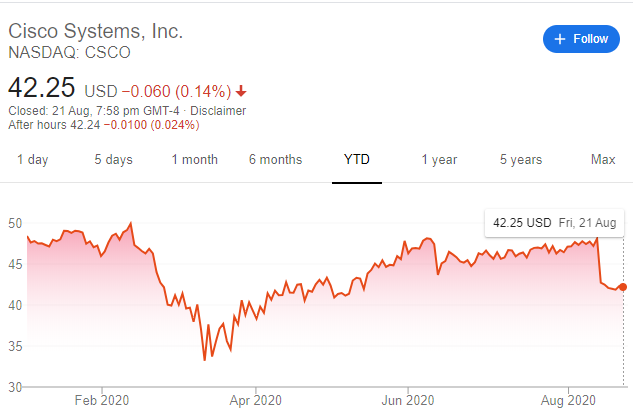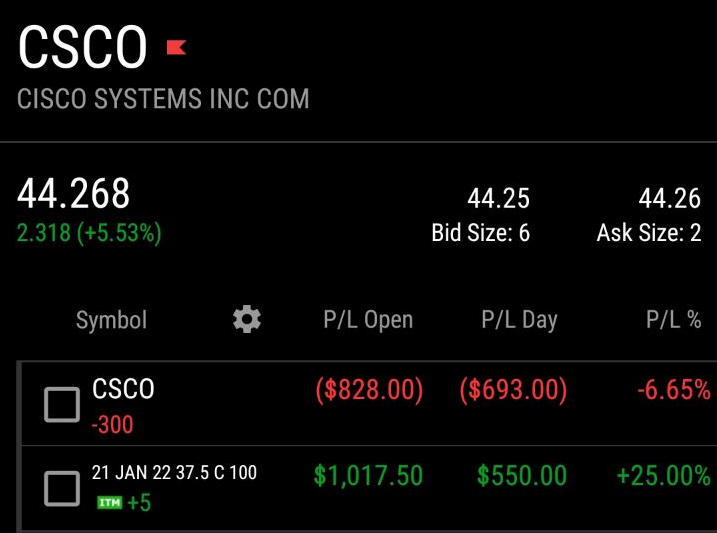Have you ever felt frustrated thinking that "I don't have much money...how can I even build up my portfolio?"
Well, fret not, I felt the same way as well and spend ton of effort and time to optimise my portfolio.
In this blog post, I am going to share with you yet another option strategy for investors with a small portfolio size.
Ideally, we should try to start with an investment portfolio of around $10,000.
Now, lets dive into another options strategy that are ideal of investors with small portfolio.
And it is aptly called, "The Poor Man's Covered Call".
The Advantage of the PMCC

In investing, one of the most crucial aspect is cash flow.
It is the same reason why most beginner investors like dividends - because of the cash flow that comes into their pocket time to time.
But once you discovered the Poor Man's Covered Call (PMCC) - you probably want to rethink about dividend investing.
Why?
Because, using the PMCC, I was able to generate well over 20% in "dividends".
I know I know - that sounds too good to be true right?
Well, read on, and I will explain the downside of this strategy at the end of this blog post - and more importantly, how you can minimize the downside.,
But first what exactly is this strategy about?
What is the PMCC?

The Poor Man's Covered Call is a combination of two option trades.
When you buy a call option - it means that you are expecting the price to increase, and you make money if the share price goes up.
And when you sell a call option - you make money when the price either fall or stay the same.
This means that I can establish a position where I am bullish on the long term, but at the same time, if I determine that the stock has been overbought, I could sell short-term call options to make money.
So let's give a real example.

I spent $8.14 to buy 5 contracts of call options.
Because 1 option represents 100 shares, I actually spent $814 x 5 = $4,070 for 5 call option contracts.
Of course, this is with proper portfolio sizing - make sure to read our Long Call Guide to determine how many contracts you should buy based on your portfolio.
Here is where it gets interesting.
What if I told you that I bought these options when the share price of CSCO was at $43.35.
And currently, the share price is at $42.25

"Wait, Gin...doesn't that means you are losing money?"
Well, on my buy call options - yes.
In fact, I am losing $207.50 on my call options...

You might be thinking, "Okay Gin, so how do you actually make money from this?"
Well, the answer?
Using the short-term call options.
Collecting 40.3% in "Dividends"

Most people are always looking at their paper gains and losses - but what I prefer is to look at are the profits that are already in my pocket.
What if I told you that I have collected $1,641 in actual cash by selling options.
Yes - in cash like dividends.
What that means is - I spent $4,070 to buy the call options, but I have already collected $1,641 in cash flow.
That's 40.3% in "dividends" by the way.
This is the reason why I have not touched dividend investing ever since I started using options back in 2017.
The same dividend investor can spent the exact same $4,070 to buy CSCO shares instead - and they will get around a 3.2% dividend yield...which is around $130.24 per year!
By the way, how long did it take me to collect $1,641 in cash flow?
Well, it took me from Mar 2020 to Aug 2020 - so around 5 months.
Strategy | "dIVIDENDS" | TIME FRAME | Yield |
|---|---|---|---|
Dividend Investing | $130.24 | 1 Year | 3.2% |
Poor Man's Covered Call | $1,641 | 5 Months | 40.3% |
Comparison of two strategies using the same $4,070
This is one of the secrets why I don't really care about stock market fluctuations - because I know I am going to collect cash flow anyway.
So how does selling call options works?
Now, before you get all excited, there is always a downside - and as with any downside, there's a way to manage and minimize the downside.
Let's first go through the concept of selling call options.
The Concept Of Selling Call Options

What does selling a call option actually mean?
To me, it is like taking a sip from your red wine.
Remember that buying a long-term call option means we are expecting the share price of the stock to increase over time.
Similar to how we want to age a wine....(forgive me if this is completely wrong, I am not a wine guy...)
However, in the short term, there will be fluctuations - and that is where we want to sell call options to profit in the short term.
Okay, so what does selling a call option means...
When you sell an option, there are four factors to consider:
Let's give a real example.

On 18 Mar 20 (the last row), I sold 3 call options and collected $37 each.
That is $111.
On a capital of $4,070 - that is already 2.7% by the way...
On 25 Mar 20, I did the same thing and collected $96...
...and on 2 Apr 20, I did it again and collected $105.
By repeating the process, that's how I collected $1,641 in cash flow by selling options.
(There are more to that in selling options, which I will discuss in my next blog post.)
What's The Catch?

Okay, Gin, what's the catch?
There has to be a catch right?
So yes, there's a catch.
Let's take the trade on 18 Mar 20 for example.
I sold 3 call options, at a strike price of 41.5 with an expiration date at 27 Mar 20.
This means that I promise to sell 300 CSCO shares at $41.50 each anytime before 27 Mar 20.
There are two possible scenarios:
Either way, I still keep the $111 in premium - that's important to remember.
But scenario 1 is where it gets tricky - what if my call options get exercised, and I ended up shorting 300 shares.
"GIN, THAT'S SHORT SELLING! ITS DANGEROUS!"
The Beauty Of PMCC

Here's what you forgot...
...I have bought 5 call options.
If the share price shot above $41.50 - what do you think will happen to my call options?
Yes, they will be making money as well.
Remember that call options increases in value when the underlying share price increases.
Here's an example when the share price shot up to $44.268, and my short call options were exercised - and ended up shorting 300 shares.

But look at the net profit,
The net paper profit? $189.50.
So, here comes the catch.
Noticed that if I did not sell call options, I would have a paper profit of $1,017.50 instead of a measly $189.50.
Because if I did not sell call options, I wouldn't short the 300 shares at all.
However, it important to do a comparison with dividend investing at this point.
Remember that I opened my call option positions when the share price was at 43.35.
Let's compare the two scenarios:
Strategy | real Profits | PAPER PROFITS |
|---|---|---|
Dividend Investing | $0.36 x 94 = | ($44.268 - $43.35) x 94 |
Poor Man's | $312* | $189.50 |
*The $33.84 came from the dividends given by CSCO on 2 Apr 20.
*The $312 came from the premium collection from option selling.
Either way, using the PMCC is a smarter use of capital - in both real profits and paper profits.
The Conclusion

It is important to note that the general risk of buying call options has always been time decay.
So it is important to buy a call option with a long expiry date which is what I have done for CSCO.
The idea of this blog post is really to give you the big idea of the PMCC strategy, in future blog post, I will share a step-by-step guide on how exactly to do it.
There is really so much more to this strategy and I am just scratching the surface, so if you want to be updated on future blog post, make sure to join my newsletter down below.
Bonus: I will discuss more about using building wealth through the stock market, so if you want to be kept updated when my blog posts are out, the best way is to join my newsletter.
P.S It even includes a wealth building guide for 9-to-5s as a welcome gift.



 Here at Passive Seeds, we hate spam, so we will never share your info. An email will be sent with the link to the wealth building guide, but you can unsubscribe at anytime.
Here at Passive Seeds, we hate spam, so we will never share your info. An email will be sent with the link to the wealth building guide, but you can unsubscribe at anytime.